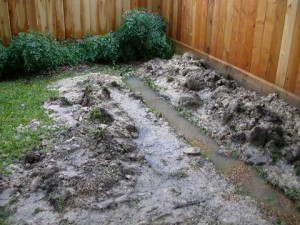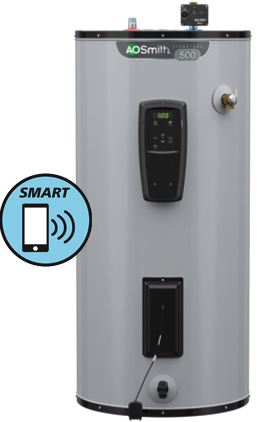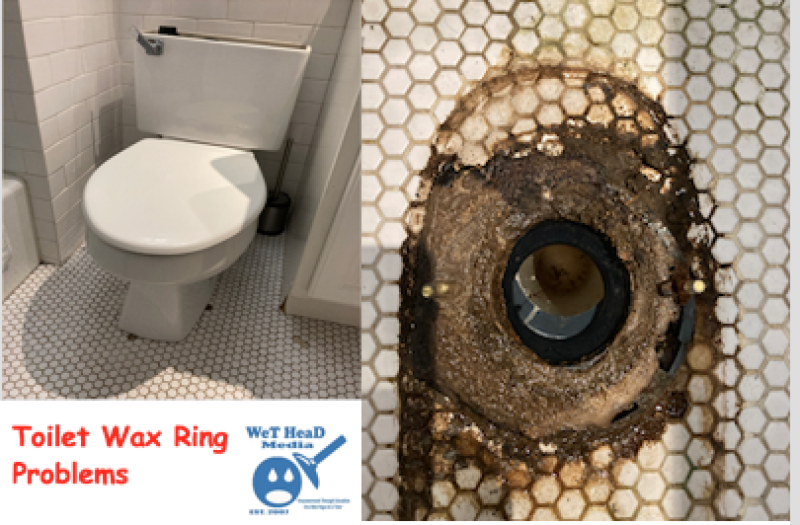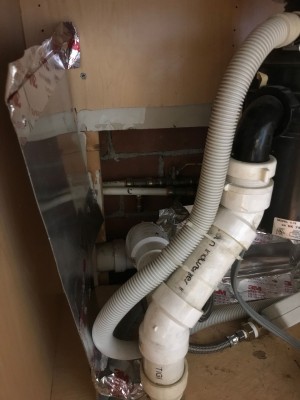How to install a French drain
French drains are a time-honored system that eliminates excess water from low points and other areas which are prone to saturated soil. The French drains are a classic system and very simple. They are nothing but trenches filled with gravel with sand on top of that. French drains are more preferred because of their low cost and easy installation. So, if you want to dig a French drain to improve soggy areas or minor flooding in the backyard, you must know how to install one.

French Drain Installation
In order to install a French drain you must make sure that the basement is dry. This is because a wet basement will lead to black mold build up and also a cracked foundation. The following steps will help you to build a French drain yourself.
Determining the slope & place for dirt
Before you start digging a trench, it is necessary that you find out the direction of the slope of land and also how deep you need to dig. Also you have to think about placing the leftover dirt. The subsoil that will be dug out should be piled on one side of the trench so that you do not need to cross the trench with a wheelbarrow. The topsoil will be piled on the opposite side of the subsoil and should be spread back over the top of the trench.
Digging the trench
Digging your own trench will call for buying your own shovel, drain pipe and gravel and a bottle of aspirin. The trench should be dug out form the spot where water is getting collected or the place where you want the water to be flooded into. This could be inside the basement or along the foundation. The route should be traced to the lowest part of the land or a retention pond so that the water gets drained out effectively. The trench can range from 5-6 inches in width and 8-12 inches in depth.
Filling the trench
Once you have dug out the trench, you will have to fill the trench. The first fill will be of gravel up to a few inches from the surface. The size of the gravel will be 0.5 to 1 inch size. The space at the top will give room for the pipe to be placed. The second fill on top of the gravel will be of 3-4 inches of coarse sand. The usage of coarse sand is to allow the water to pass through.
Turf the trench
The turf may be seeded into the sand or they may be allowed to grow from the stand if it is of a spreading type. The sod can also be laid over the sand, for doing so one needs to ensure that there is no soil in the roots to contaminate the sand. Thus, the roots need to be washed.
Adding the pipe
You need to install a perforated pipe for the water to enter the drainage area and a solid pipe to once you pass the flooded area. This is done so that the water does not leak from the system. The drain pipe at the bottom should be wrapped with a filter fabric.
Covering the pipe
Once the pipes are in their place, you need to cover them with washed gravel or very coarse sand. This is because just back-filling the trench with dirt will clog the system and turn the sand into mud once water starts flowing in. The gravel should be of atleast 1 inch surrounding the pipe on all sides. When the pipes are covered you can place sod over the unperforated portion of the pipe. This hides the pipe from view.
How to build French drain outside?
If you have water puddling in your yard or in the lawn or areas that get washed out every time it rains, you need a drainage system. Installing a French drain in your yard is the best way to drain out the water where you wish to. The perfect French drain leach field will be an out-of-the-way are with sandy soil through which the water will seep in without much trouble.
To dig a French drain outside you will need to make a plan. The size of the trench will depend on the size of the property, distance to travel and the pitch needed. Also, you must ensure that you are not disturbing someone else’s property. One must check with the local utility company before one begins the operation. Also, one must keep in mind that bigger moisture problems can be handled with wider trenches only. Before applying gravel over the pipe, the trench should be lined with landscape fabric so that dirt does not enter the gravel. The gravel should be covered with tarpaper, topsoil and seed. The drainpipe can be connected to a drywell to dispose off the water safely.
How to Install French Drain in basement?
Most homes sit on basements which are dampy; leaky which make it unhealthy and a breeding ground for diseases. Installing a French drain around the perimeter of the basement slab is one way to keep basements dry. Installing a French footing drain along the basement actually catches the water seeping into the channels due to gravity and sends them back to a sump pump which drains the water outside or to another drain line.
A French drain in the basement is installed by cutting a channel into the basement slab around its perimeter. Then, the ground is dug below the channel and a perforated rain pipe is installed along with a sum pump well. After this is over the trench is filled with gravel. The slab is then patched with fresh concrete. The main advantage of this type of drain is that it does not interfere with the exterior landscape.
How Much Does a French Drain Installation Cost?
The cost of the French drain varies. It depends on several factors like soil conditions; size of the drain etc. Here is a basic estimation about French Drains in the basement:
180 foot perimeter basement (40’x45’) is about $9,000 includes 2 Sump Pumps
150 foot perimeter basement (40’x35’) is about $8,000 includes 2 Sump Pumps
130 foot perimeter basement (30’x35’) is about $7,000 includes 2 Sump Pumps
200 foot perimeter basement (50’x50’) is about $10,000 includes 2 Sump Pump.
100 foot perimeter basement (25’x25’) is about $6,000 includes 1 Sump Pump.
How to Install a French Drain Video
If you wish to see a demonstration of how to dig out a French drain, here is one for you.
French drains are really helpful when it comes to having a proper drainage system. If you wish to have a dry basement and a dry yard go for a French drain.



